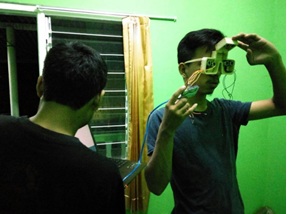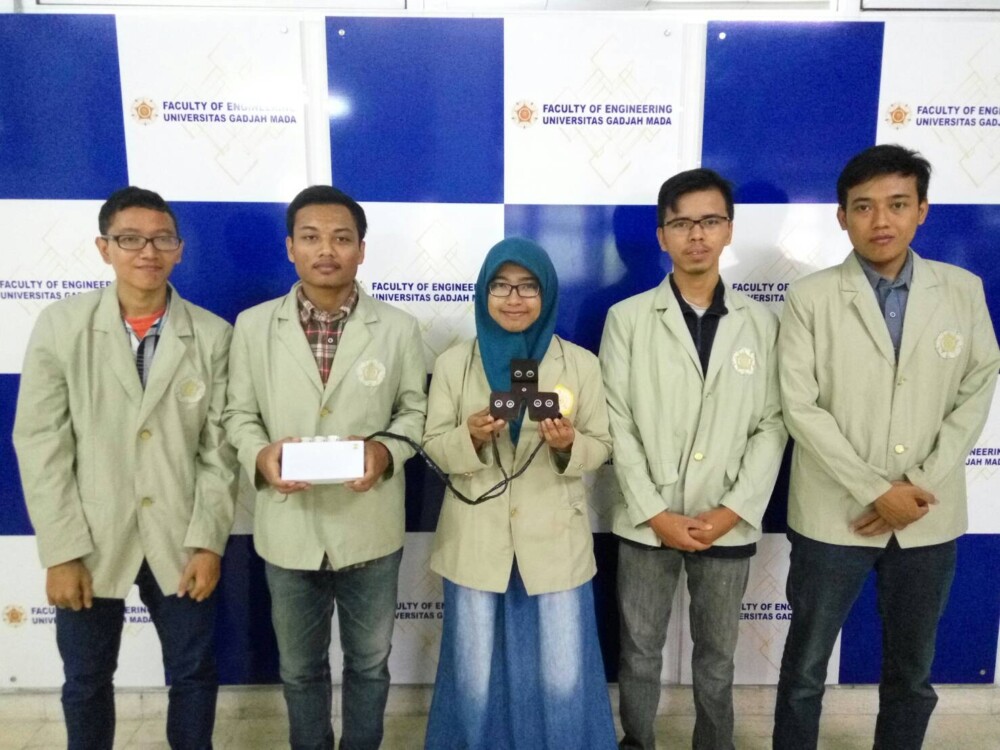Blind people are individuals with a sense of vision that is not functioning normally in their daily activities. In everyday life, people with visual impairment often have difficulty in navigation, especially when traveling somewhere. As a result, productivity of blind people decreases. Therefore, a tool is needed to help them travel and move.
K-Netra is created to fulfill that need. K-Netra is a Smart Glasses with Ultrasonic Sensor Based and TPA 81. K-Netra’s function is to detect objects that are in the path of motion of the blind people. It will be able to identify objects as inanimate objects or living things, as well as tracking the existence of blind people so that the location and the path of the server can be seen in real time.
“With K-Netra, it is expected to reduce the risk of accidents of blind people and help them get to the destination safely,” said Ahmad Andriyanto, students of Nuclear Engineering, Faculty of Engineering, Monday (13/6) when introducing K- NETRA.
Ahmad Andriyanto said K-NETRA is the work of five students of the Faculty of Engineering. They are Ahmad Andriyanto (Nuclear Engineering), Aries Setiawan (Industrial Engineering), Suci Fauziah Hilmi (Industrial Engineering), Gita Ade Wijaya (Electrical Engineering), and Hari Wibawa (Electrical Engineering).
According to Ahmad, K-NETRA is one of smart glasses with proximity sensors, thermal sensors, and GPS, which are helpful for people with visual impairment and can be applied as a tool to help determine the distance of an object, a hole, a living thing, and can find out the location of the blind people. This glasses uses arduino uno micro-controller which run all the systems.
“When there is an object in front of “K-Netra”, the sensor will provide a signal as an input to the microcontroller. If the microcontroller gets an input, this will be immediately forwarded to the buzzer. The Buzzer will then give an information about the presence of the object captured by the sensor of SRF -04,” Ahmad said.
The purpose of creating “K-Netra”, Ahmad Andriyanto said, is to give a solution to facilitate blind people to know the objects that are in front of them with just glasses like normal people. With the K-Netra the problems frequently experienced by blind people can be minimized and even blind people can move freely, comfortably, and safely in everyday activities.
Ahmad said that the making of “K-Netra” is a long process and takes approximately four months. The design of the glasses is equipped with ultrasonic sensors, TPA 81 sensor, Arduino Uno, GPS using GSM connected to a computer server. Output received by the user is in the form of a buzzer sounds.
“The first step that we did is brainstorming based on the identified issues. After brainstorming we decided to create a prototype in the form of smart glasses for the visually impaired (K-Netra),” said Ahmad, chairman of the K-Netra.
To be more practical, glasses is selected because it is considered efficient, comfortable to wear as well as able to cover their disabilities. To implement the ideas, the design team started by looking for related literature on ultrasonic sensors, thermal sensors, microcontroller, GPS, as well as the design of the system block diagram.
“We also consulted with faculty to obtain corrections, suggestions and feedback. The results of the testing in the laboratory of Faculty of Engineering were hundred percent satisfactory,” he said.




